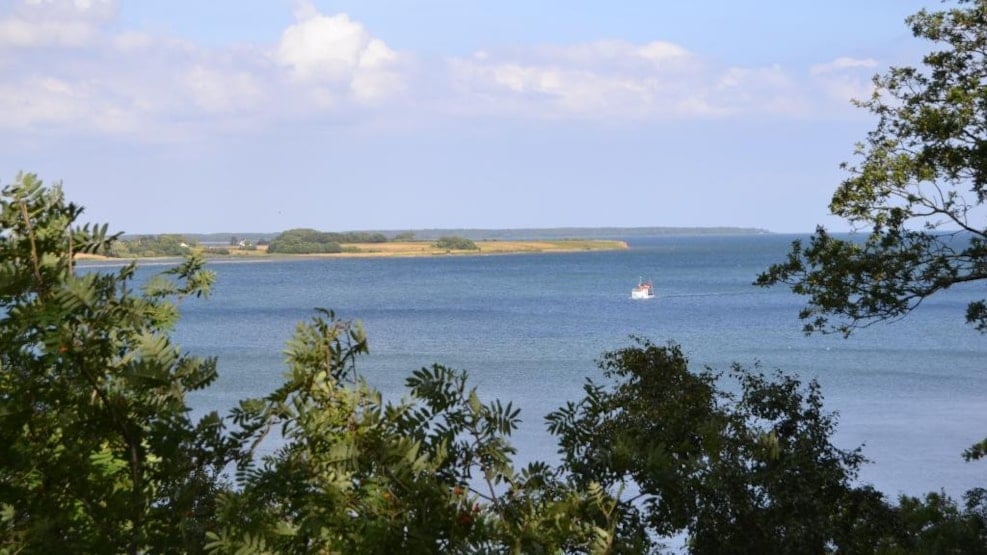
The entrenchments at Horsens Fjord
English and Swedish tourists are more than welcome in Snaptun and Horsens but it was not always like that. Along the coast of the little port, there were several entrenchments protecting Horsens Fjord from enemy ships during times of war. Remains of these are still visible in the landscape today.
The outpost at the entrance to Horsens Fjord
The ferry harbour in Snaptun is the most peaceful and charming place imaginable. However, during the wars of the 15th–19th centuries, the area played a strategically important role in defending Horsens. Any enemy ships attempting to reach Horsens had to navigate through the relatively narrow entrance to Horsens Fjord at Hjarnø Sound—sailing directly past Snaptun. As a result, the fortifications in the area formed a formidable and effective defense for the trading town.
The Swedish Redoubt
If you follow the popular Coastal Trail (Kyststien) Snaptun–Juelsminde from Snaptun Harbour, you will pass along the coastline through Tønballe Forest. At the top of a steep slope, you will come across two cannons. These cannons are not original but were salvaged from the ship-of-the-line Christian VII, which was wrecked in a storm near Anholt in the winter of 1787.
The cannons mark the location of the Swedish Redoubt, built in 1658 during the Swedish War. From the star-shaped fortification, there is a stunning view over the sound.
It is said that the pine trees now growing on the redoubt sprouted from seeds unknowingly brought in the soldiers' equipment.
The Big Battery
Continuing a short distance along the Coastal Trail from the Swedish Redoubt, you will reach Hundshage, a prominent headland in the landscape. This was once home to the largest of Snaptun’s batteries. The Big Battery was constructed during the Napoleonic Wars (1807–1814). The star-shaped fortification housed several cannons, barracks, a gunpowder magazine, and a blockhouse for the soldiers’ protection.
The defense was led by Jes Glud, a local estate owner from nearby Jensgaard.
Over the past 50 years, the sea has gradually eroded the site of the Large Battery. Today, a lagoon has formed where the battery once stood.
The Small Battery
Back at the Snaptun Marina, just a short walk northwest along the beach, you will find a small elevation in the terrain. This is the visible remnant of The Small Battery, which, like the Large Battery, was constructed during the Napoleonic Wars. It is believed to have been built on the remains of an older fortification commissioned by King Frederick II in 1566.
Today, the Small Battery is mostly overgrown and plowed over, but you can still sense the outlines of the structure. Nearby, Hesteodde, a sand-covered headland, extends into the water, offering a beautiful view.
Ownership
Large parts of Tønballe Forest, as well as the ramparts, are located on private land. In privately owned forest you are allowed to walk on the paths during daylight hours, but you should avoid stopping. Always follow the signs in the forest. You can read more about behaviour on private land on this page.
Hiking around the redoubts
As mentioned, the fortifications are located along the scenic Coastal Trail Snaptun–Juelsminde. However, for those looking for a shorter circular walk, it is also possible to explore a loop around Snaptun, including the harbor, coastline, and Tønballe Forest.
You can follow nature trails around Snaptun using this digital map.
Last updated on September 9, 2025 by Casper Terkelsen